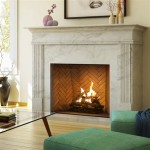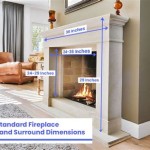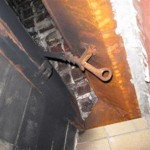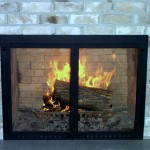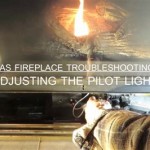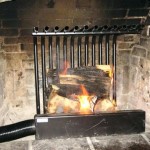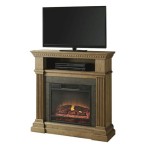The Enduring Utility of the Blow Poke Fireplace Tool
The blow poke, a seemingly simple tool, holds a significant place in the realm of fireplace accessories. Its primary function revolves around efficiently tending to a fire, providing a targeted way to introduce oxygen and manipulate embers. While technology has introduced various modern fireplace tools, the blow poke retains its appeal due to its simplicity, effectiveness, and versatility. This article delves into the intricacies of the blow poke, exploring its construction, function, history, and various applications.
The basic design of a blow poke consists of a long, slender rod, often made of metal or wood, with a pointed or slightly flattened tip on one end and a hollow channel running through its length. The tip is used for poking and adjusting logs, while the hollow channel allows the user to blow air directly onto specific areas of the fire. This focused airflow can reignite dying embers, encourage flames in desired locations, and even help control the overall burn rate of the fire.
Construction and Materials
The construction of a blow poke significantly impacts its durability and performance. The most common materials used are metal, primarily steel or wrought iron, and wood. Metal blow pokes offer superior heat resistance and are less prone to damage from proximity to the flames. Steel blow pokes, especially those made of heavier gauge steel, are robust and can withstand frequent use. Wrought iron, known for its characteristic texture and aesthetic appeal, also provides excellent heat resistance and durability. The metal component typically extends the full length of the tool, providing structural integrity.
Wooden blow pokes are often crafted from hardwoods such as oak, ash, or hickory. These woods are selected for their strength and resistance to heat. However, wooden blow pokes are generally less durable near the tip, which is exposed to direct heat. To mitigate this, some wooden blow pokes incorporate a metal tip or sleeve that protects the wood from burning. Regardless of the material, the handle is designed to provide a comfortable and secure grip. Ergonomic considerations are often incorporated into the handle design to reduce fatigue during prolonged use.
The internal channel, which facilitates airflow, is a crucial aspect of the blow poke's design. The diameter of the channel influences the velocity and volume of air delivered to the fire. A narrower channel generates higher velocity, allowing for more precise targeting of embers. A wider channel provides a greater volume of air, which can be useful for quickly reviving a large area of the fire. The channel must be smooth and unobstructed to ensure efficient airflow. Some blow pokes incorporate a filter or screen at the mouthpiece to prevent debris from entering the channel and potentially clogging it.
Functionality and Operation
The primary function of the blow poke is two-fold: to physically manipulate the fire and to control the airflow. The pointed or flattened tip allows the user to safely and accurately adjust the position of logs and embers within the firebox. This is essential for maintaining an optimal fire configuration, ensuring proper airflow around the fuel, and preventing the fire from smoldering or going out. The tip can also be used to break up large chunks of wood, encouraging faster burning.
The blowing function is equally important. By directing a stream of air onto specific areas of the fire, the user can significantly increase the oxygen supply, accelerating combustion. This is particularly useful for reigniting dying embers or encouraging flames in areas where the fire is struggling to establish itself. The targeted airflow also allows for greater control over the fire's intensity and direction. For instance, blowing air onto one side of the fire can encourage it to burn more actively in that direction, helping to heat a specific area of the room more efficiently.
The operation of a blow poke is relatively straightforward. The user holds the tool by the handle, positions the tip near the area of the fire requiring adjustment or airflow, and then blows through the mouthpiece. The length of the tool provides a safe distance from the heat and flames, reducing the risk of burns. The user can adjust the intensity of the airflow by varying the force with which they blow. Similarly, the angle and position of the tip can be adjusted to target specific areas of the fire with precision.
Historical Significance and Evolution
The blow poke's history is intertwined with the history of fireplaces themselves. While precise origin dates are difficult to pinpoint, evidence suggests that similar tools have been used for centuries to manage fires in various cultures. Early versions likely consisted of simple hollow reeds or bamboo shoots used to blow air onto the flames. As metalworking techniques advanced, more durable and refined blow pokes were developed.
In historical settings, the blow poke was an indispensable tool for maintaining fires in homes and workshops. Prior to the widespread availability of matches and lighters, keeping a fire burning continuously was essential for heating, cooking, and various industrial processes. The blow poke allowed users to revive dwindling fires quickly and efficiently, minimizing the effort required to maintain a consistent flame.
Over time, the design of the blow poke has evolved to incorporate new materials and features. Modern blow pokes often feature ergonomic handles, improved airflow channels, and aesthetically pleasing designs. Some manufacturers even offer blow pokes with built-in bellows or electrical fans to provide a more consistent and powerful airflow. Despite these modern innovations, the fundamental principles of operation remain the same. The blow poke continues to serve as a reliable and effective tool for managing fires, offering a blend of traditional craftsmanship and modern functionality.
Beyond its practical applications, the blow poke has also acquired a certain cultural significance. It is often associated with the warmth and comfort of a traditional fireplace setting. The ritual of tending to a fire with a blow poke can be a relaxing and meditative experience, providing a connection to the past and a sense of domestic tranquility.
The blow poke, in its various forms and iterations, serves as a testament to the enduring human need to control and harness fire. Its simple yet effective design has allowed it to remain a relevant and valuable tool throughout history, from the hearths of ancient dwellings to the modern fireplaces of today.

Blow Poke Fireplace Tool

Firedragon Fireplace Tool All In One Bellows And Rake The Green Head

Blow Firepit Accessories Fire Pit Tools Outdoor

Blow Poke Blo Handmade

Firedragon Blow Poke Fireplace Tool Yourelectricfireplace Com

Which Fireplace Tools Do You Need Charles Nijman

Elegant Blow Poke Fireplace Tool Fire Pit Rolling Logs Bbq Campfire Camping Trip

Blow Through Fire Pit Stoker Walden Backyards

Blow Poke Blo Handmade
Everymarket

